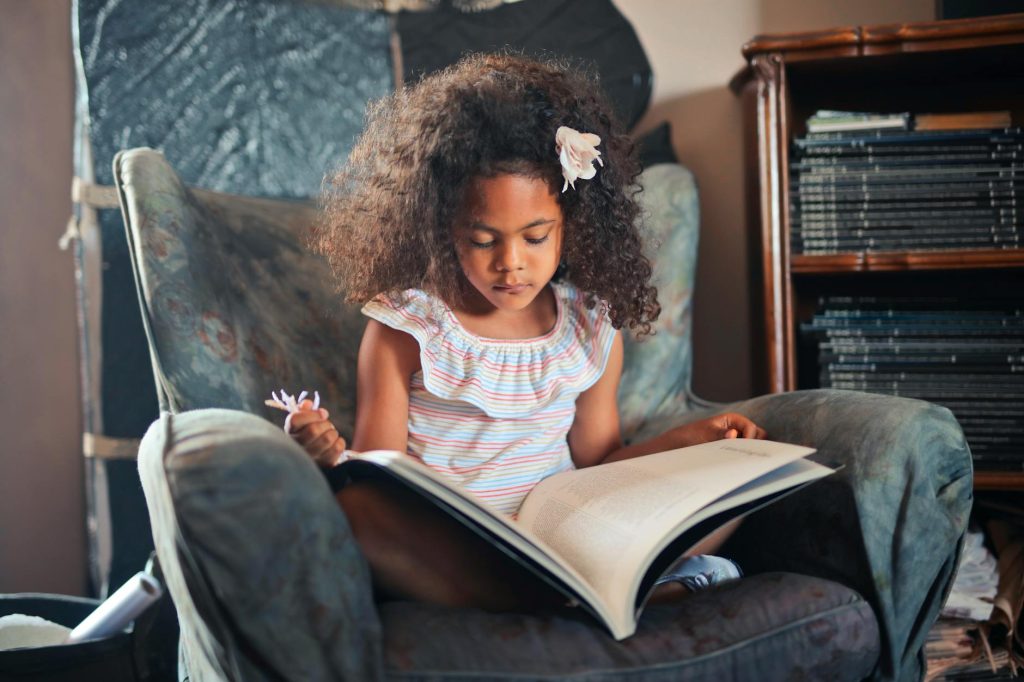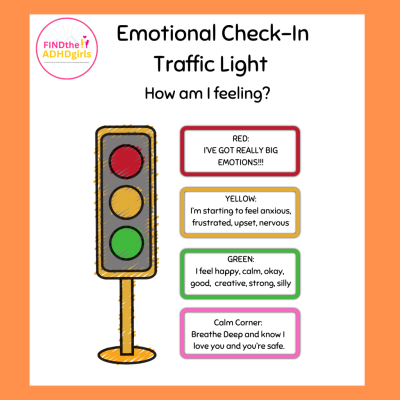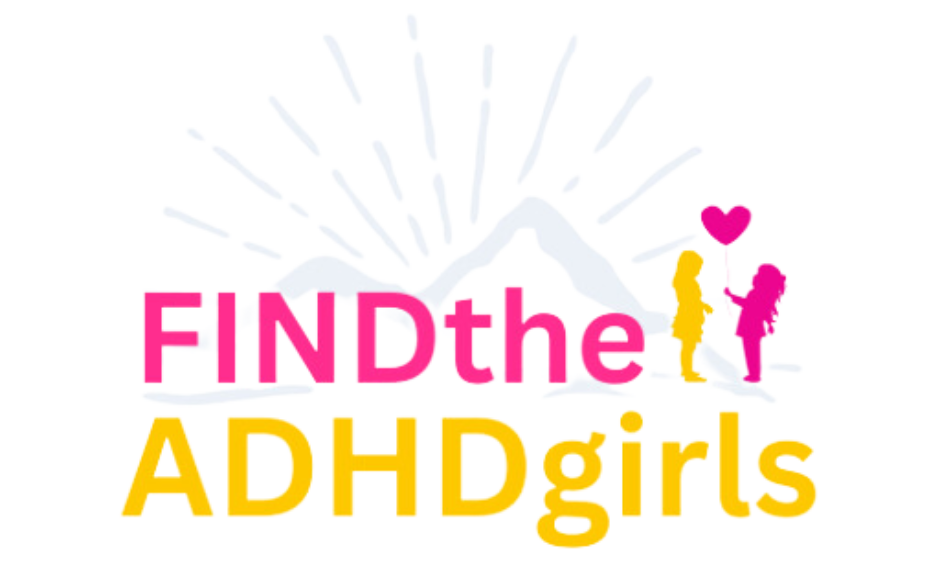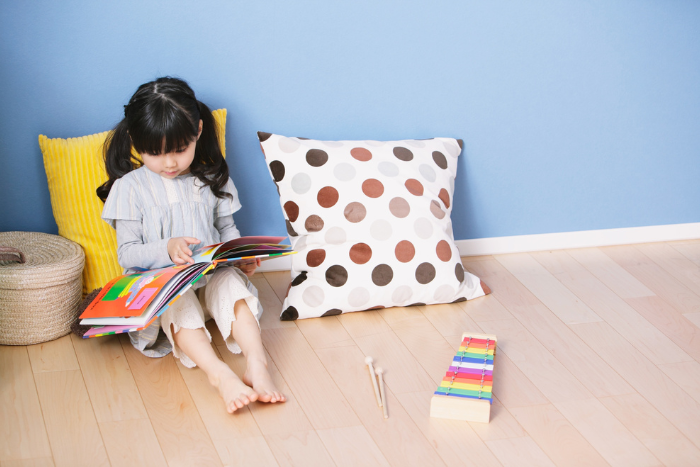Your daughter has ADHD, and she’s amazing, creative, spontaneous, fun, talkative, and has an imagination second only to Willy Wonka. But on the flip side, she’s emotional, quickly frustrated, and easily overwhelmed. One minute, she’s creating a new world with markers and glitter; the next, she chose the wrong color for her picture, and her whole day is ruined. Things that aren’t a big deal get dialed up to 10 on the emotional Richter scale—especially in the afternoons. That’s why having an ADHD calm corner at home can be a game-changer. It gives her a consistent, comforting place to reset when emotions start to spiral. Your daughter might behave perfectly at school but then act out at home, and this calming space can help bridge that gap.
Sound familiar?
A calm corner gives your daughter a pressure-free space to relax. It’s a safe space to unwind at home after school or when she’s feeling overwhelmed. This blog will explain how to create a calm corner, but first, let’s look at the science behind it
Why does she need an ADHD calm corner?
Part of ADHD is difficulty with emotional regulation. She is still learning to recognize, name, and control her feelings. Your daughter takes any minor criticism or correction to heart. Rejection, whether real or imagined, is crushing. She has frequent meltdowns with BIG EMOTIONS. At school, your daughter may mask or tightly control her symptoms. But at home, she “lets it all out.”
This doesn’t mean you’re a bad parent or that she hates you, far from it. ADHD means her brain is wired differently, and certain situations and sensations can cause sensory overload and overwhelm her. Something as simple as itchy clothing, loud, overlapping conversations, or harsh lighting can be too much. You’re a safe place, so she lets her defenses drop at home after holding things in all day.
While it is good news that home is her safe place, knowing that doesn’t help you deal with her BIG EMOTIONS. That’s where a calm corner comes in.
What is an ADHD calm corner?
An ADHD calm corner:
Provides tools to calm down before emotions escalate.
- Creates a sensory-friendly space that reduces feelings of overwhelm.
- Turns “time-out” spaces into a positive, self-directed break.
- Nurtures coping skills that your daughter can use outside the home
An ADHD calm corner is a space where your daughter can feel her emotions and learn to soothe herself. It’s a designated area of your home that your daughter can retreat to when she feels herself getting upset or overwhelmed. It’s cozy, inviting, and designed for your daughter’s needs. She can go there to recharge without feeling like she’s being punished or shut away. It’s her safe space.

How to create a Calm Corner
Choose the right spot
Her calm corner should be in a quiet area of your home. Avoid high-traffic areas like hallways. Think of a cozy nook in the den or a corner of her bedroom. The area doesn’t have to be separate but should feel like it is. A small tent, playhouse, or mat that defines the area works well. Consider lighting when choosing the spot; use natural light when possible. Or you can use strings of fairy lights or a soft lamp to create a calming, peaceful space.Make it hers
This is your daughter’s space. Help her take ownership and make it inviting and personalized to her. Put a comfy chair or bean bag in the space and use her favorite colors or decals of her favorite characters.What to include in an ADHD calm corner
Creating a calm corner is a wonderful way to provide your daughter a peaceful space to manage her emotions and regain balance. But it’s more than a quiet space; it’s a tool for your daughter to learn emotional regulation. Include items that help your daughter calm down and relax, such as fidget toys. In addition to helping her self-soothe, sensory items can improve her hand-eye coordination, fine motor control, and focus. Offer a wide variety.Here are some items you might consider including:
- Weighted Blanket or Stuffed Animal: provides gentle, firm pressure and warmth, often soothing to girls with ADHD
- Books: easy to read and have calming themes or stories.
- Art Supplies: crayons, coloring books, and other art supplies help get feelings out non-verbally.
- Sensory Toys: stress balls, fidget spinners, and other items to squeeze or fiddle with, such as kinetic sand and bins of colorful rice or pasta. Occupying her hands can decrease mental anxiety.
- Music and Sounds: A small music player with headphones to play calming music or nature sounds. Noise-canceling headphones are also an option—just remember she can’t hear anything!
- Visual Relaxation Tools: Things like a lava lamp, a glitter jar, or an artificial aquarium mesmerize and soothe.
- Grounding Visuals: a poster of simple breathing or grounding exercises to practice if she likes. This helps her learn essential emotional regulation skills that stay with her as she grows.
Teach your daughter to use the ADHD calm corner
Explain the calm corner and its purpose to your daughter. Pick a neutral time. In other words, don’t introduce it when she’s already upset! The area should never be used as a punishment. Let her know it’s her space and just for her. She can go there when she needs a break or feels her emotions getting BIG.Emotional traffic light to identify feelings
A great way to teach your daughter about escalating emotions? An emotional traffic light. Green light: When you feel okay, good, relaxed, happy, calm, ready. Yellow light: When you start feeling frustrated, upset, or angry—or just need a break. You can use your calm corner as a safe, quiet, relaxing space for as long as you need! Red light: BIG EMOTIONS! Your calm corner is here to help you feel better. You can squeeze your squish ball or cuddle up with your blanket. It’s your time and space to feel your BIG feelings.
Introduce this system to your daughter and teach her what it means and how to use it.
Sample explanation:
“You know that traffic lights tell cars when to stop, slow down, or go. Did you know that your feelings give you signals, too?
When you’re feeling good and in control, that’s a green light. You can keep going! When you start to feel frustrated or restless, that’s a yellow light. Just like a car needs to slow down, this is your signal to slow down. Take a deep breath, and decide what you need to do. But when you feel BIG EMOTIONS, like you want to yell or cry, that’s a red light. You can stop and take a break in your calm corner.”
Practice using the space together and daily emotional check-ins using the traffic light. Again, the corner isn’t a punishment; it’s a safe space. So, encourage your daughter to use it when feeling a yellow light emotion. When she does, praise her. Over time, she’ll get better at catching her yellow light signals before they turn red and gain more control over her feelings.
Final thoughts on an ADHD calm corner
At the end of the day, it isn’t about fixing your daughter’s emotions; they don’t need fixing.
An ADHD calm corner helps her recognize and honor her feelings as she learns to deal with them. It’s her safe space to practice and develop resetting and regulation skills before a full-on meltdown. Over time, she’ll gain self-confidence, recognize her feelings earlier, and manage her emotions in a way that works for her. And that’s the real goal: independence and strategies to successfully manage her ADHD. Ultimately, the skills she is learning in her calm corner will improve her life into adulthood.
Like this? We think you’ll love this.
About the Author
 Alex Alcon
Alex Alcon
Alex Alcon, RN, Freelance nurse content and copywriter, owner of RN2Pen LLC
 Cynthia Hammer, MSW
Cynthia Hammer, MSW
Cynthia Hammer, MSW, is an ADHD advocate helping girls get timely diagnoses. She’s the founder of FINDtheADHDgirls, Executive Director of the Inattentive ADHD Coalition, and author of Living with Inattentive ADHD.
Share via:

